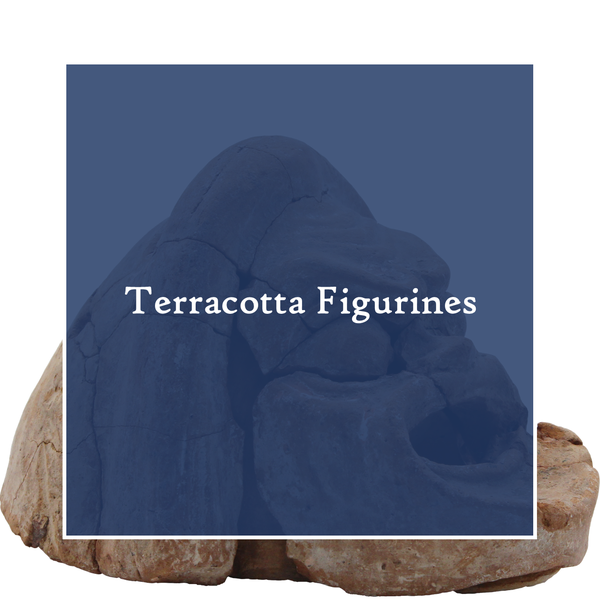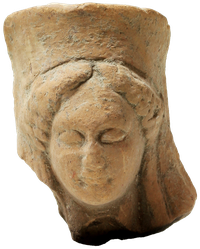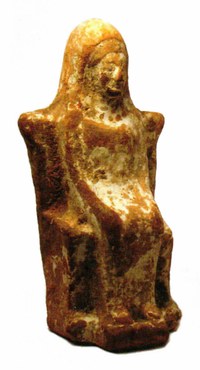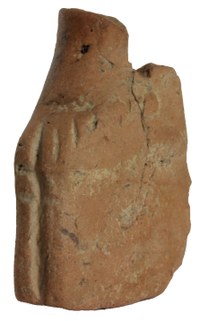Terracotta Figurines
|
Shaping figurines out of clay is one of the earliest attempts at sculptural design. At first, figures were modelled freely, by hand. But as early as the 7th century BC, the technique of moulding began to spread. In this way, popular objects can be reproduced until the object has gone out of fashion. First the original mould is made and kilned at 750-950 degrees. The negatives are also kilned. From this, the figurines are made, which must now dry until they are leather-hard. Then they can be painted. A light coating, the engobe, serves as a painting base. During kilning, water vapour is formed which escapes through a hole on the bottom or back of the figurines. At the same time, the object shrinks by about 10 %. If such a specimen itself serves as a mould again, then the new negatives are smaller than the original ones. In this way, series of similar terracotta figurines are created which, apart from additions made later, only differ in size. If enough examples of the same object are available, a relative chronology can be derived from the difference in size. The collection of ancient terracotta figurines at JLU comprises more than 100 originals, whose date of origin ranges between the 13th century BC and the 4th century AD. They come from mainland Greece and the Aegean islands, the Apennine Peninsula, Asia Minor and the Black Sea region, as well as from the Roman north-western provinces (Germania, Belgica). Since a large part of the documents on the holdings of the Collection of Classical Antiquities was lost in the turmoil of the Second World War, the time and place of origin can usually only be determined by stylistic comparison with specimens in other museums, excavation reports and other publications. The former curator of the Collection of Classical Antiquities, Dr. Matthias Recke, rediscovered old holdings thought to be lost, and was able to allocate some objects to their origin.
|
 |
 |
 |
 |
 |
 |
 |
 |
 |
 |
 |
 |
 |
 |
 |
 |
 |
 |
 |
